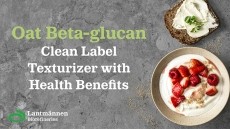Scientists look to carrageenans to boost egg white gelling
ability of the egg protein and could spark a "great interest using
liquid egg as gelling agents", says research from Spain.
Carrageenan, a popular hydrocolloid used for texture and viscosity in food products, is a gum extracted from seaweed, largely sourced from the Philippines and Indonesia.
A strong pull in global carrageenan stocks, impacted by an increase in demand from China's booming processed food industry, has led to price spikes for a polysaccharide that is traditionally sold at low cost.
The study, published in the journal Innovative Food Science and Emerging Technologies (doi: 10.1016/j.ifset.2006.03.001), investigated the effects of three types of carrageenans (kappa, lambda, iota) on the gelling properties of ovalbumin, the most abundant egg protein and a key ingredient in many food products.
Lead author Cristina Sanchez-Gimeno from the University of Zaragoza reports that kappa carrageenan was significantly more effective than the other carrageenans at enhancing the gelling of the ovalbumin solution. None of the carrageenans were able to form gels by themselves.
This works suggests that kappa-carrageenan and ovalbumin could offer an alternative gelling agent for food technologists as stabilising and reinforcing agents of food gels and emulsions, but clearly more research is needed to take the work out of the laboratory and into a food matrix.
Historically, the use of carrageenan for food has grown in industrialised countries by at least 5 to 7 per cent per year, particularly on the back of growing demand for convenience foods.
In the EU the food market has grown to use both refined - known as E407 on food labels - and semi-refined (E407a) carrageenan. In the US, there is no distinction for the food labels - the hydrocolloid is simply known as carrageenan.























